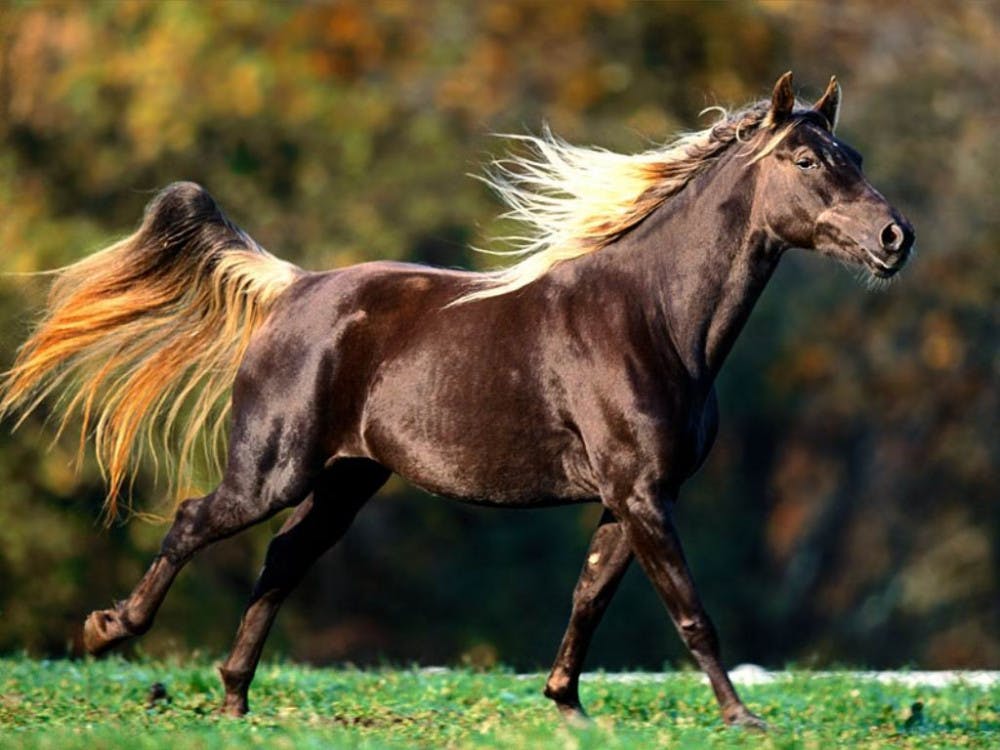The Fighting Breed: Heroic Horses of the Civil War is a new documentary that premiered in July 2015. It focuses on the immense role that the Morgan Horse played in the Civil War, and is the third part of a six-part documentary that chronicles the roles of the Morgan Horse in American history. The subsequent parts are still in production. The film is directed by Steve Murphy and produced by Douglas Lazarus, a Middlebury resident. Their project team consists of other Morgan horse historians.
The inspiration for this documentary was the creation of “a unique documentary of the story of America told through this breed’s involvement with that history,” according to Lazarus. Morgans have been present in American history since 1789, and are used to this day by farmers, pleasure riders and even in equine therapy.
Because of their unique role in history, Lazarus and his team hope to distribute the movie quite widely as an educational and historical aid that will raise awareness for the breed. The impacts of this breed are innumerable. According to Lazarus, “wherever you look in American history, you find Morgans.”
The film will be screened at the International Museum of the Horse in Lexington, Kentucky with an audience of about 200,000 people. Lazarus hopes to continue this connection throughout each of the six installments of the documentary. Eventually, the team hopes to expand the documentary to an hour-long show to be used by PBS, The History and Learning Channels and other educational TV channels.
Each of the six segments focuses on a different portion of the history of the Morgan Horse: the first on the origin of the breed, the second on how Morgan Horses earned their fame and their involvement in the Pony Express and the Oregon Trail, the third on the horses’ involvement in the Civil War and the importance of the Vermont Cavalry in the Civil War, the fourth on the importance of Morgans in the Indian Wars, the fifth on the transition from horses to automobiles and how the Morgans’ influence lived on even as technology advanced, and finally, the sixth on the role of equine therapy for veterans from Vietnam. The last episode also addresses the Morgans’ continuing role in the culture of the United States.
The Morgan Horses’ history actually began in Central Vermont, where Justin Morgan first popularized the breed. Because Morgan did not want the horse but could not sell it due to its small stature, he began to loan the horse to other farmers. The farmers were impressed with the intelligence, strength and adaptability of this horse, so they began to breed him with their mares. Thus, the Morgan Horse was born.
Due to the genetic dominance of Morgan Horses, the breed can be mated with almost any other mare and the offspring will have essentially Morgan characteristics. Morgans were thus irreplaceable to the farmers of Vermont, and breeding Morgans became a thriving business. They were sold to southern farmers, although this trade ended with the beginning of the civil war.
As a result of the importance of the Morgan Horse in the history of Vermont and the United States, there is a museum in downtown Middlebury focused solely on the Morgan Horse called The National Museum of the Morgan Horse. According to the website of the museum, its mission is to educate the public about the Morgan horse, urge for more research into the history of the Morgan and to collect and display artifacts about the Morgan Horse.
Another essential part of the culture of the Morgan Horse in Vermont is the University of Vermont Morgan Horse Farm. The U.S. government originally created this breeding farm when the population of Morgan Horses was dangerously low due to the number of horses killed in battle.
In subsequent years the farm was turned over to the University of Vermont, and to this day this “line of Morgan Horse is considered one of the best in the world,” according to the farm’s website. Morgan Horse breeding is the second largest agricultural industry in Vermont, and the impact of the Morgan Horse on the Vermont economy is approximately $27 million per year. As these statistics attest, the Morgan Horse has played an integral role in the history of Vermont and the U.S., which Lazarus hopes to celebrate in his documentary. He sums up the Morgan Horse as “a horse that did it all.”
New Film Showcases Historic Morgan Horse

Comments



